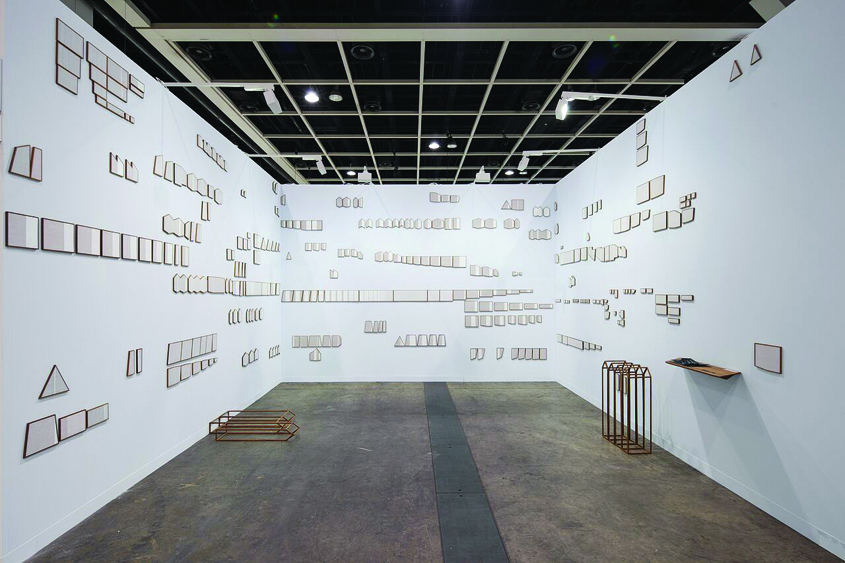Her project, In the Absence of Writing, is “an homage to the intangible oral traditions that are still alive today,” says Butail. She is now looking forward to understanding the various oral traditions all over the world, such as the Zoroastrian Avesta, Jewish Oral Torah and Indian Veda traditions.
In what’s now to be the future of her creative journey, she is eager to meet people who have devoted their lives to studying the oral tradition. She says, “There are people all over the world who have given a lot of time of their lives to make the next generation familiar with this tradition through teaching and other means.”
She adds: “People working in oral traditions are not really recognised. It is not like a secure, financial job. People are not valued enough. There is no guaranteed income as other profession have. It is required that their work should also be made known to the world.”

Butail will be experiencing and recording the different memory techniques of various people engaged in this practice, by interviewing scholars and practitioners of each tradition. Her journey will be through the cities of Yazd (Iran), Jerusalem (Israel), London, Varanasi, Pune, New Delhi and Mumbai.
Delhi’s Galleryske represents Butail. At Art Basel Hong Kong, she presented her installation work titled Turning Towards Pure White, which is an extension of her previous work, A Story Within A Story. Talking about the selection process, Butail shares, “Artists who participate in discoveries section of Art Basel Hong Kong become eligible to be judged by a panel of jury members. I think there were 20 booths in Hong Kong in 2017. I was in India and I got a call from one of the members of my gallery that I was chosen as one of the three artists. I had made it to the shortlist. I was invited with two other artists to write a proposal and my proposal won.”
Butail will be experiencing and recording the different memory techniques of various people engaged in this practice, by interviewing scholars and practitioners of each tradition. Her journey will be through the cities of Yazd (Iran), Jerusalem (Israel), London, Varanasi, Pune, New Delhi and Mumbai.
As a child, Butail used to keep traditional rituals at bay. She used to rub away the tilak as soon as the puja at her home was over. Like most people, Butail also listened to the hymns recited by the pandit during her wedding without actually knowing the meaning of those. It really didn’t bother her. But during her many travels around the world the artist felt unsettled. The people she met displayed pride in their culture and here she was, uninformed about her own. She decided to take the journey back to her roots.
“I wanted to do things that gave me a feeling of fulfilment,” says Butail. “I wanted to return to things closer home. That’s why I decided to read Rigveda and for the same purpose started learning Sanskrit. I enrolled in an open learning course and apart from the text material began my own research online.”
Most of the artworks by Butail are composed on the trope of oral tradition as the ideas for her art arise from the Rigveda, which is a collection of hymns.

Butail talks about her life before she got involved in art. She says, “I was enrolled in the foundation course at the National Institute of Fashion Design and I was painting on t-shirts and was making a bit of money. But one of the mass orders I got from a retail company where I had a chance to print my designs got me an award and then I decided to seriously start doing mainstream art. I then enrolled in an online master’s programme in the Rigveda.”
In an ongoing exhibition of her work, Unearth, at Delhi’s Exhibit 320, the artist is showcasing a sculpture titled Vedic Goddesses Dawn and Night. She talks about the sculpture: “I often take abstract forms to build on a dialogue. This work is part of a series of seven works. Each of the seven works is unique. I feel that there is a unique presence of ever evolving and processing into the rhythms of the unknown constructing the foundations of one’s day—Dawn and Night.”
Her preferred mediums are textile, paper, wood, thread and gold. The artist has been now researching on the oral tradition for a decade, and is trying to learn some portions of the hymns of the Rigveda by heart. For her, creating art equals to personal contentment. She says, “Creation is a wonderful subject in the Rigveda. There are many hymns on creation. It’s an aspect which definitely springs from love. I feel happy to be in my working space every day, it gives me peace.”

